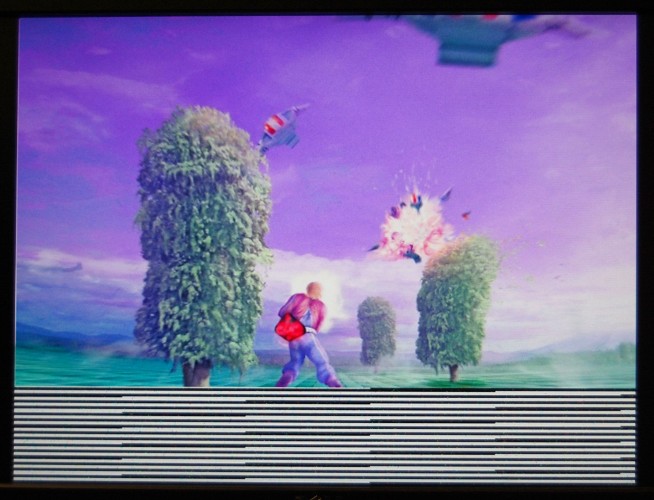I’ve been playing around with the ZPU again, and exploring what’s needed to get such things as malloc() and rudimentary filesystem support working. By re-using the FAT filesystem code from the Minimig project’s firmware and creating a simple wrapper, I now have a complete enough system that I can load and display a JPEG file from SD card.

An image in the process of being loaded
A 640×480 JPEG currently takes approximately 39 seconds to load and display – my next project will be to explore hardware acceleration of the DCT and see how much faster this can be made.
A binary snapshot with DE1 and DE2 bitstreams, and files to go on the SD card can be found here
The source repo is tagged to match this snapshot.

Hello Alastair,
First off, I want to say great work you’re doing with your FPGA projects!
I hope you don’t mind, but I’ve taken the liberty to port some of your code to my homebrew FPGA-based board (FleaFPGA) with some additional tweaks added..
Through our porting efforts, we noticed a problem within the vga_controller.vhd module. Color outputs were not being silenced during the blank periods.. ie:
else
vga_window<='0';
red ‘0’); — Fix to silence color guns
green ‘0’); — ” ” ” ” ” ” ”
blue ‘0’); — ” ” ” ” ” ” ”
if currentY=vsize and currentX=16 then
vga_pointer<=framebuffer_pointer;
vga_newframe<='1';
vblank_int<='1';
end if;
I noticed the guns are silenced in the original .bak file on github. Makes a big difference to the multiple monitors I’ve tried here. Please disregard the above if you were already aware of it. Thanks!
By the way. Is there a recommended means to contact you privately? Feel free to drop me an email. 🙂
Regards Valentin Angelovski
Thanks for the feedback – glad you’ve found this stuff helpful, and please do feel free to port it and modify it however you wish!
I moved the blanking out of the vga_controller module when I got my DE2 board, because the video DAC chip on the DE2 handles blanking internally. For boards that don’t have such a DAC it’s probably best either to handle blanking in the board-specific toplevel, or just use the dithering module, which also does blanking.
Hmm. Ok not quite sure what happened to my code snippet there, but that’s definitely NOT what I pasted! :/
Yeah WordPress mangled that, didn’t it? I don’t know whether code tags work in comments – only one way to find out:
[code]
if this = ‘working’ then
mood <= good; end if; [/code] Edit: no, code tags don't work in comments. Nuts!